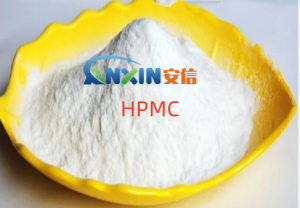HPMC (Hydroxypropyl Methylcellulose) is a common food additive in ice cream recipes. It is a water-soluble cellulose ether and is widely used in the food industry, particularly in frozen foods, dairy products, and vegetarian alternatives. Given the extremely high demands on taste, texture, and stability in ice cream, HPMC plays a crucial role.
1. Basic Definition and Properties of HPMC
HPMC is a non-ionic polymer derived from natural cellulose, modified by methylation and hydroxypropylation. It is not a synthetic plastic, but rather a derivative of natural cellulose, with the following properties:
High water solubility: It dissolves in both cold and hot water, forming a transparent or translucent colloidal solution.
High viscosity adjustability: The solution has a wide viscosity range, which can be controlled by varying the degree of substitution and molecular weight.
Thermogelation: It forms a gel at a certain temperature and returns to a solution upon cooling. Non-toxic and non-allergenic: HPMC has been listed as a safe food additive by the FAO/WHO and many national food pharmacopoeias.
2. Challenges in Ice Cream Formulation
Ice cream is a complex multiphase system containing air, water, fat, protein, and sugar. To achieve a smooth mouthfeel, stable structure, and long-lasting shelf life, the following challenges must be addressed during production:
Ice crystal control: Coarse ice crystals easily form during freezing, affecting the consistency.
Melting stability: Temperature fluctuations can cause the product to melt rapidly or precipitate water.
Emulsification: Fat globules must be evenly dispersed to maintain a smooth mouthfeel.
Low-fat or vegan formulation challenges: How to maintain the texture of traditional ice cream without using dairy products or reducing fat?
These challenges are where HPMC plays a key role.
3. Main Functions of HPMC in Ice Cream
3.1. Thickening and Improving Mouthfeel
HPMC significantly increases viscosity in aqueous systems, enabling better air bubble encapsulation during freezing, resulting in a smooth, creamy mouthfeel. Especially in low-fat ice cream, HPMC can partially replace fat, reducing the roughness.
3.2. Inhibiting Ice Crystal Growth
During frozen storage, water molecules migrate and cause ice crystals to gradually grow. HPMC forms a stable colloidal network within the system, restricting the free movement of water molecules, thereby inhibiting ice crystal coarsening and allowing the ice cream to maintain a dense structure after repeated freeze-thaw cycles.
3.3. Improving Emulsification and Foam Stability
Although HPMC is not a typical emulsifier, its viscosity regulation and colloidal membrane action can indirectly stabilize fat globules and air bubbles, preventing phase separation or collapse, thereby improving the overrun and stability of the ice cream.
3.4. Improving Melting Properties
Ice cream containing HPMC does not collapse rapidly during melting, but instead softens gradually. This “slow-melting” property enhances product stability during transportation, display, and consumption.
3.5. Vegetarian and Functional Applications
In plant-based ice cream or dairy-free formulations, HPMC is often used as a structural agent to replace milk protein and milk fat, providing a smooth and firm texture similar to traditional ice cream. It also contains dietary fiber, enhancing the product’s health profile.
4. Advantages of HPMC
High Safety: As an internationally recognized safe food additive, long-term consumption poses no health risks.
Wide Applicability: It can be used in full-fat, low-fat, and dairy-free ice cream.
Excellent Temperature Resistance and Freeze-Thaw Stability: Suitable for handling temperature fluctuations during cold chain storage and transportation.
Reduced Dependence on Other Stabilizers: Compared to relying solely on guar gum, carrageenan, etc., HPMC offers a better overall effect and a simpler formulation.
5. Comparison with Other Stabilizers
Compared to guar gum and locust bean gum: HPMC offers greater flexibility in viscosity adjustment and a smoother mouthfeel, less prone to stickiness. Compared to carrageenan: Carrageenan tends to form a firm gel, while HPMC provides elasticity and smoothness. The two are often used together.
Compared to CMC (sodium carboxymethylcellulose): CMC is less expensive but has poor freeze-thaw resistance, while HPMC offers superior overall performance.
6. Application Examples and Trends
Low-fat ice cream: By adding HPMC, fat can be reduced while maintaining a rich mouthfeel and structure.
Plant-based ice cream: HPMC can be combined with coconut milk, oat milk, or soy milk to improve flavor and stability.
Functionalized products: HPMC, as a dietary fiber ingredient, contributes to the creation of a healthy “low-calorie, high-fiber” ice cream concept.
With consumers’ increasing focus on health and sustainability, the use of HPMC in ice cream formulations will become more prevalent. In particular, HPMC can provide technical support for dairy alternatives and reduced-sugar and fat formulations, enabling products to maintain taste while meeting health trends.
HPMC is a key stabilizer and texturizer in ice cream. It not only enhances the smoothness and stability of ice cream, but also effectively inhibits ice crystal growth and improves melting properties, making it particularly suitable for the development of low-fat, dairy-free, and functionalized ice creams. Compared to other colloids and emulsifiers, HPMC offers superior freeze-thaw resistance and a smoother mouthfeel, thus playing a crucial role in the modern ice cream industry.
Post time: Sep-02-2025

